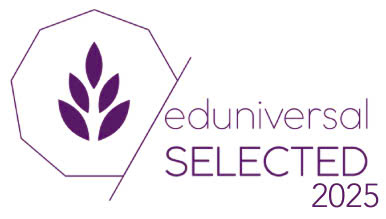Summary: Guam’s business education sector is adapting to a changing landscape. This article explores key trends, academic innovation, industry integration, and the global outlook shaping Guam's business schools in 2025.
Understanding Guam’s Economic and Educational Backdrop
Guam, a strategically positioned U.S. territory in the Pacific, offers a distinct blend of cultural richness, economic dependencies, and educational aspirations.
In recent years, Guam’s economy has seen considerable rebound, driven by tourism, increased federal spending—especially through defense contracts—and expansive infrastructure developments like Camp Blaz.
The transformation has influenced education priorities across the island. The business schools in Guam play a essential role in cultivating professionals ready for regional challenges and niches. These institutions adapt curriculums that correspond with the tourism industry, federal employment demands, and small business development.
Academic Trends Reshaping Business Education in Guam
As global higher education continues to evolve, Guam’s business education sector is aligning strategically. The push for internationalization is evident: regional cooperation and diversified curricula introduce students to global business frameworks and cross-cultural competencies.
This mirrors progress seen in other island and Pacific regions like Fiji, where institutions are becoming gateways between global trends and local realities.
Guam is pursuing similar moves through exchange opportunities and regional research collaborations, although scaled to fit its unique context.
Programs on the island are also adapting course offerings beyond generalist paths, integrating industry-aligned specializations—such as hospitality, construction project management, and environmental business policies.
Digital Transformation and Evolving Delivery Models
The digital era, accelerated by the pandemic, has transformed classroom models on Guam. Hybrid learning, simulation platforms, and virtual co-working tools are now becoming essential parts of business school infrastructure. These models not only cater to local students but extend accessibility to professionals in neighboring islands and remote areas.
While virtual classrooms bring new possibilities, institutions must balance this shift with the value of Guam’s tight-knit, community-centered learning culture.
Such hybrid balance has been successfully implemented in Southeast Asian countries like Malaysia, offering a learning path Guam’s schools may emulate.
Key Drivers: Sustainability, Entrepreneurship, and Industry Readiness
Sustainable development is now a necessary focus area for programs across Guam. From sustainable tourism to green construction, courses are being redefined to reflect environmental and economic realities. This momentum aligns with global ESG principles and helps develop future-ready professionals capable of managing small-island challenges.
Likewise, industry partnerships represent an important feedback loop for curriculum planning. Through internships, case competitions, and startup hubs, students experience the intersection of theory and practice.
These partnerships will be fundamental in transforming business education into a platform for economic development and innovation. Regional schools in places such as Indonesia have built similar frameworks to great success.
Facing Guam's Unique Challenges in Higher Education
Despite its forward momentum, Guam’s institutions face undeniable obstacles. Budget constraints, limited access to capital improvements, and administrative restructuring remain continuing concerns. Unlike mainland U.S. states, Guam works within tighter fiscal margins, making public investment unpredictable and highly reliant on federal policy.
Competition also arises beyond its borders. Many students opt for institutions in Hawaii or Asia. In response, Guam’s schools need more robust alumni networks, affordable tuition options, and competitive career pathways.
Countries such as Japan and South Korea offer attractive alternatives, setting a high bar for Guam’s business educators.
Opportunities for Educational Growth and Differentiation
Positioned at the crossroad between the U.S. and Asia-Pacific, Guam has remarkable potential to become a hub for niche business education programs. By leveraging this geo-cultural advantage, future courses could explore Pacific Rim economics, cybersecurity, and regional trade policy as focal points.
Federal investment is another untapped resource for innovation. Capitalizing on increased defense spending and infrastructure grants could enable Guam to develop modern facilities, offer scholarships, and attract world-class faculty.
These improvements could make it more appealing to students from other islands such as Micronesia (future internal link placeholder).
Additionally, stackable micro-credentials and short-form certificates can provide targeted upskilling options for locals in hospitality, financial literacy, or public administration.
Shaping a Forward-Looking Business Education Ecosystem in Guam
Guam’s road ahead will require holistic partnerships among educators, policymakers, employers, and community leaders.
The focus must remain on developing flexible, career-oriented programs grounded in Guam’s socio-economic realities, infused with global competencies.
By continuing to adapt through hybrid learning, sustainable curriculum development, and experiential coursework, Guam is well-placed to be a leader among Pacific business education providers.
Whether aligning with strategic regional interests or expanding global collaboration like those seen in Australia, Guam’s schools have a wide scope for collaboration and impact.
“Our uniqueness is a great challenge, but it is also our greatest opportunity to innovate and lead.”
In 2025 and beyond, Guam’s investment in business education will serve as a catalyst for building a resilient, bold, and inclusive future for its youth and economy.





